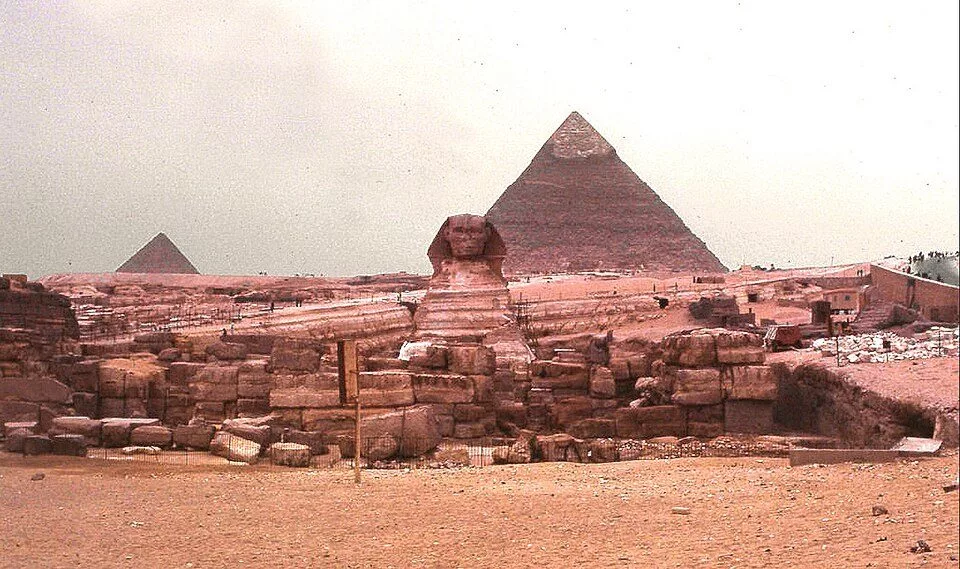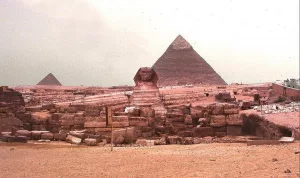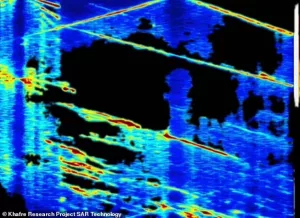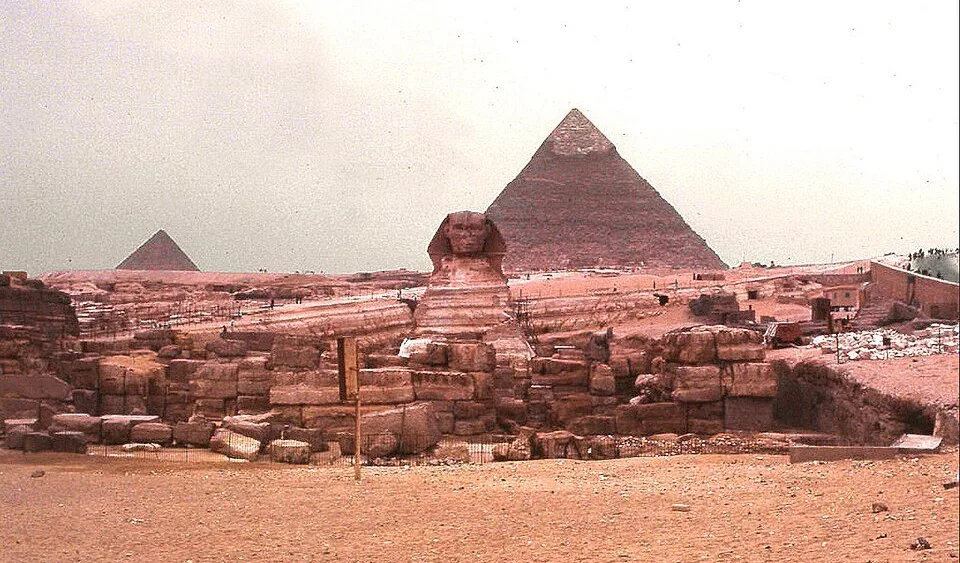
Khafre Pyramid with Sphinx in the foreground/Mike McBey, CC BY 2.0
The Discovery
Led by Professor Corrado Malanga from the University of Pisa and Filippo Biondi from the University of Strathclyde, the team employed SAR technology to penetrate the layers beneath the Giza Plateau. Their findings suggest the presence of:
- Five multi-level structures near the base of the Pyramid of Khafre, interconnected by passageways.
- Eight vertical, cylindrical shafts descending approximately 2,100 feet (about 640 meters) below the surface, surrounded by spiral pathways.
- Two massive cube-shaped chambers, each measuring approximately 80 meters per side, located at the deepest points of the shafts.
These structures are believed to extend across a subterranean network spanning over 6,500 feet (approximately 2 kilometers) beneath the pyramids.


Implications of the Findings
The discovery challenges the traditional view of the pyramids solely as royal tombs. The complexity and scale of the underground structures suggest a more intricate purpose, potentially related to ancient Egyptian rituals, engineering feats, or even unknown functions.
Nicole Ciccolo, a spokesperson for the research team, stated, “These new archaeological findings could redefine our understanding of the sacred topography of ancient Egypt, providing spatial coordinates for previously unknown and unexplored subterranean structures.” [Source: The Jerusalem Post]
Skepticism and Controversy
Despite the excitement surrounding these findings, the claims have been met with skepticism from the broader archaeological community. Renowned Egyptologist Dr. Zahi Hawass dismissed the findings as “completely wrong” and labeled them as “fake news,” criticizing the methods and lack of peer-reviewed evidence. [Source: The National]
Professor Lawrence Conyers, a radar expert from the University of Denver, expressed doubts about the technology’s ability to detect structures at such depths, suggesting that the claims might be exaggerated. He noted that while smaller structures like shafts and chambers might exist beneath the pyramids, the idea of a vast underground city is questionable. [Source: The Sun]
Technological Considerations
Synthetic Aperture Radar (SAR) is a remote sensing technology that uses radar signals to create high-resolution images of the Earth’s surface and subsurface. While SAR has been effective in detecting shallow underground features, its capability to accurately identify structures at depths of over 600 meters remains a topic of debate among experts.
SAR has been used in defense technology for decades, mostly in radars for missile and vehicle guidance. This is the first notable project where it’s successful use has been in mapping or outside of guidance systems.
Future Prospects
The research team has expressed a strong interest in conducting further investigations, including potential excavations, to validate their findings. However, obtaining the necessary permissions from Egyptian authorities, who are known for their cautious approach to archaeological excavations, may prove challenging.
As the debate continues, the archaeological community awaits further evidence and peer-reviewed studies to substantiate or refute these claims. The potential discovery of such extensive underground structures could significantly enhance our understanding of ancient Egyptian civilization and its architectural prowess.
Further Exploration
For those interested in a visual analysis of the SAR findings and the ensuing controversy, the following video provides an in-depth examination:
Video Source: Khafre Pyramid SAR Scan ANALYSIS: LOST CITY or FAKE NEWS?
As new technologies continue to emerge, the exploration of ancient sites like the Giza Plateau will undoubtedly yield further insights, challenging and enriching our understanding of history.
For further reading, head to these sites and tell us your opinion in the comments below!










